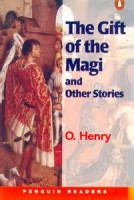 Hemingway wrote in short, curt sentences in simple language – gruff and outspoken as the man himself. Faulkner used elaborate descriptive paragraphs. Stephen King is known for his use of foul language. Poe’s works contain very formal language, written purposefully and methodically. Other authors weave their tales as if they were being recanted over an evening campfire or a morning cup of coffee.
Hemingway wrote in short, curt sentences in simple language – gruff and outspoken as the man himself. Faulkner used elaborate descriptive paragraphs. Stephen King is known for his use of foul language. Poe’s works contain very formal language, written purposefully and methodically. Other authors weave their tales as if they were being recanted over an evening campfire or a morning cup of coffee.
Style is the entire way you present your writing to your reader. A few sites on the internet say that style and voice are the same thing, but others, which I agree with, state that voice is just one part of the whole. Style encompasses the voice (what they ‘hear’ when they read the story) as well as the vocabulary used and the way the work flows.
How you develop, or don’t develop your characters. The way you lay out the locale. Whether you are explicit in your sex scenes, or just ‘fade to black’. Pacing of your action. Dialogue vs. exposition. All these things contribute to your style.
Predictability of style is often what causes a reader to return to an author. They know what kind of story to expect – like the  ending with a twist in an O’Henry story. But always writing in the same style, like using the same voice, can keep you from stretching and developing – as an author and as a reader. After all, after you’ve read a few O’Henrys, you begin trying to figure out the ending before you get there, because you know what’s coming.
ending with a twist in an O’Henry story. But always writing in the same style, like using the same voice, can keep you from stretching and developing – as an author and as a reader. After all, after you’ve read a few O’Henrys, you begin trying to figure out the ending before you get there, because you know what’s coming.
Many writers experiment by retaining certain styles for certain genres – readers who are attached to the romances won’t be disappointed, but could still enjoy the mystery because it’s a totally different kind of tale. Another approach is to use a pen name when changing your style.
Several years ago I gave a writing buddy something I was working on (hmm, I’m still working on it) and when she returned it to me she said it didn’t sound like my writing. Had I developed a style and didn’t even know it? I went back over past work to analyze it, and identified three styles. If it was humorous, I wrote one way. If it was dark and serious, another. And most of my poetry, no matter what the form, has a few stylish identifiers. Yay! I’ve identified my work! Now, the pressure’s on to be consistent – although that particular story has a form of its own. A fourth? Or just an anomaly?
Finding your style can take a while. It could involve the comfort level you feel when developing your story – sometimes you can tell when it’s just not working. It could involve readers’ reaction – what sells, what doesn’t. It’s a tricky thing, and we all have to experiment.
So, while the voice is the way you want your story to be heard, the style is the way they see it. Got it?
Here are a couple great articles that elaborate on style –
http://www.learnnc.org/lp/editions/few/684
http://ezinearticles.com/?A-Writers-Style&id=6390051






This is a great post. You should teach writing. You present the elements in such a clear way, plus you’re fun!
Oh, thanks DJ!